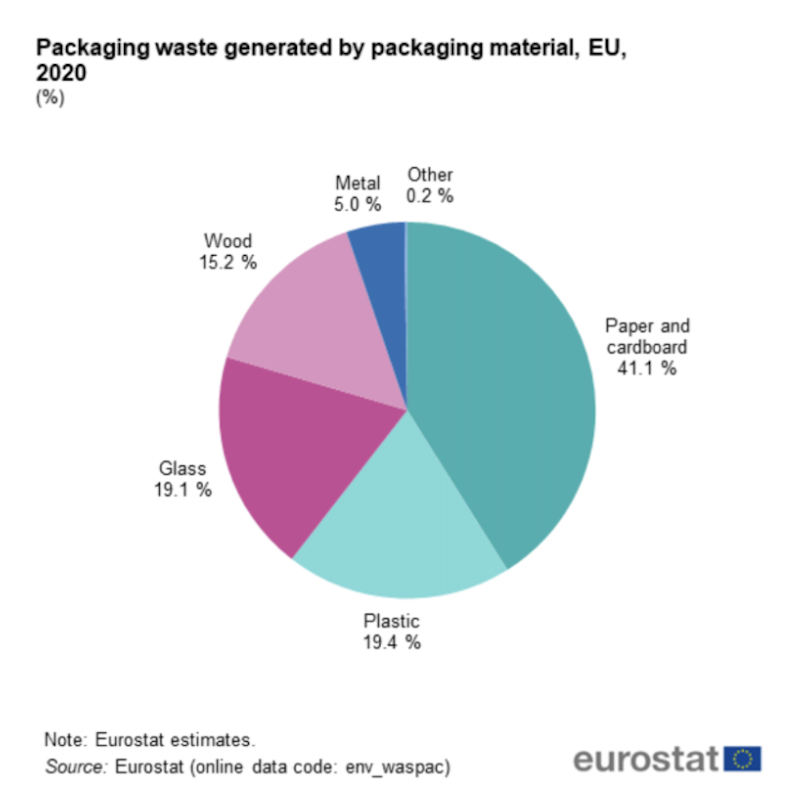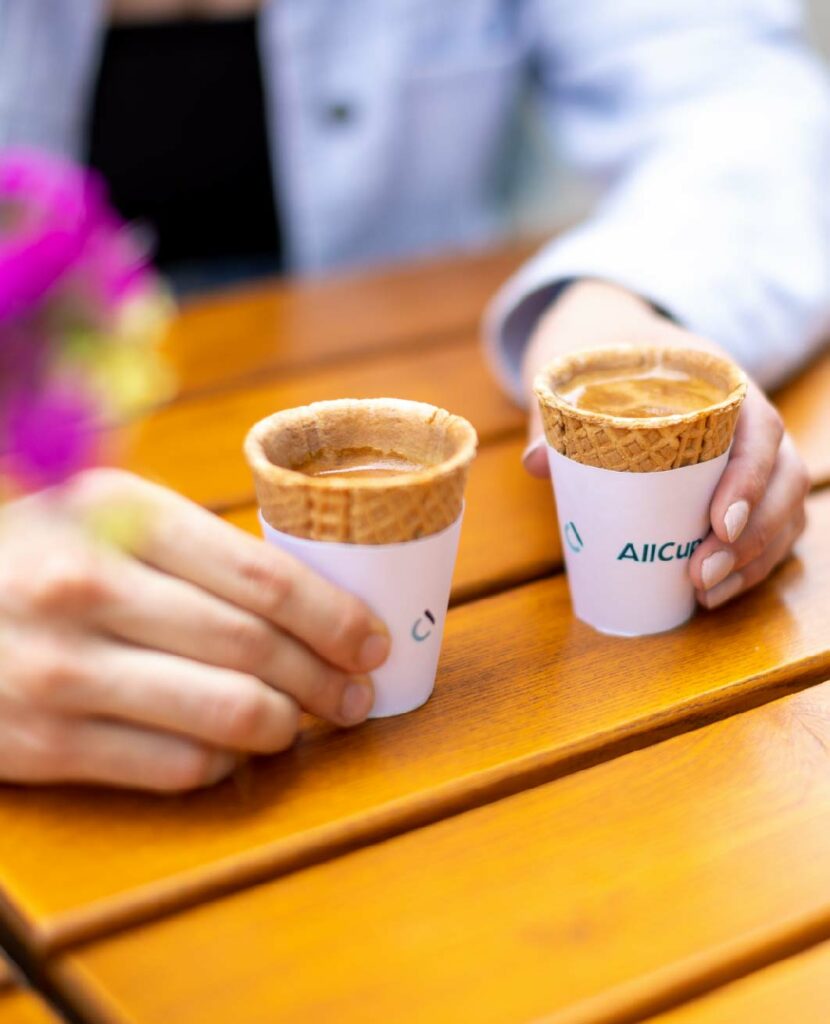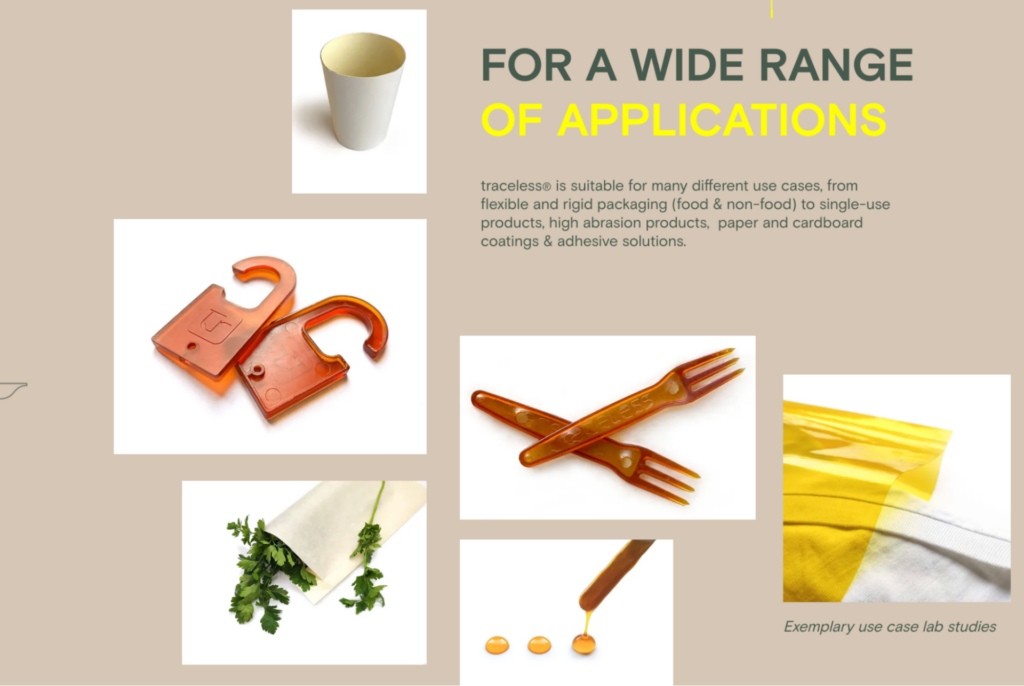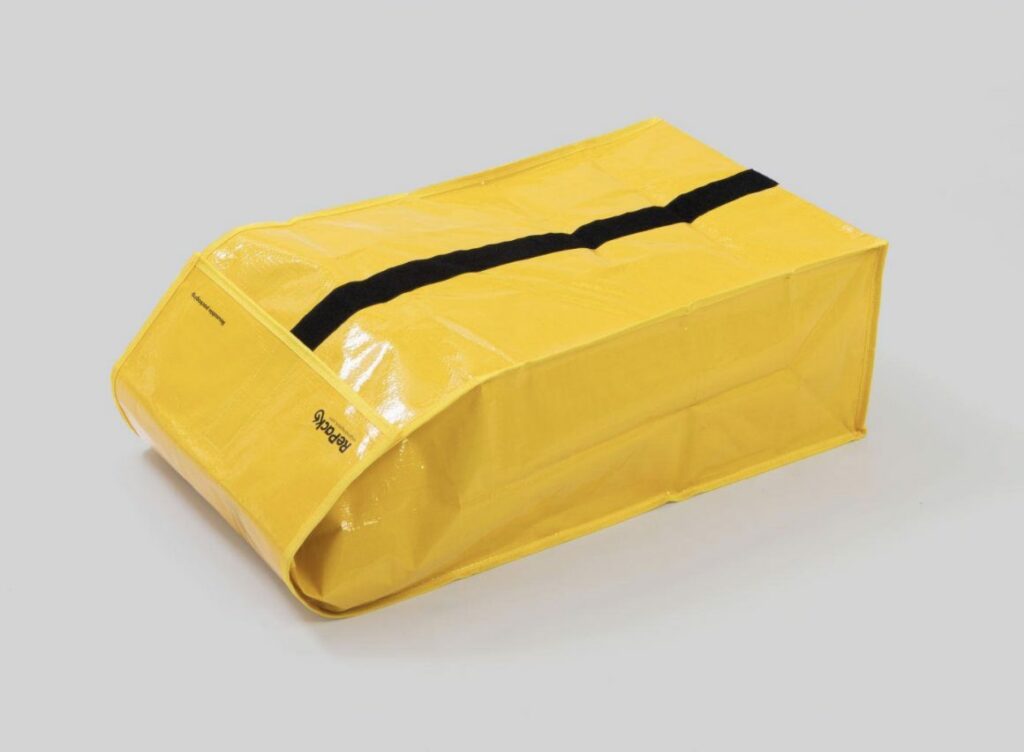Shifting Tides: The Revolution of the Sustainable Packaging Sector
Sustainable packaging has taken many forms, from edible to biodegradable, and is an opportunity field that sparks creativity and innovation – it’s also one we dedicated our most recent ImpAct Accelerator to! Today, we provide an insight into current packaging trends capable of providing solutions to environmental challenges and connect the dots on how the packaging sector will be shaped by upcoming regulations and market drivers.
We also consider these packaging solutions in relation to the sustainable food and circular retail trends uncovered in our recent trend reports, which we invite you to dive into next.
Impact Hub Berlin’s programmes support impact entrepreneurs in the field of Circular Economy, as well as those working on sustainable food systems. As we work in these areas of impact we notice how closely intertwined they are, both in terms of challenges and root causes, and solutions.
The Circular Economy is one of our main and most active impact ecosystems. The recent focus on sustainable packaging solutions means a chance to not only support impact ventures and innovators in this exciting field touching upon every area of consumption, but also to dig deeper to reveal the complex relationships of the circular concepts of reduce, reuse, and recycle when it comes to packaging.
The pressure for change
Nowadays, packaging solutions are as diverse and multi-faceted as the ever-growing number of products they protect and contain. As consumers and producers become increasingly aware of planetary boundaries and the need to future-proof both business and lifestyle, the pressure for the packaging industry to move towards a more circular and sustainable solution is growing.
Let’s take a look at the different global trends out there creating the demand for innovation in this sector and how impact entrepreneurs can respond with smart solutions that benefit people and the planet.
In many countries, the growth of Gross Domestic Product (GDP) and the rise of digitalisation has enabled consumerism and e-commerce to skyrocket in recent years. Billions of people can now easily access a global and digital market and can afford to consume products at an ever-increasing pace. With this trend, the demand for packaging has also tremendously increased. From 2013 to 2018 alone, the global packaging market grew by 6.8%, and is set to grow around 3% per year until 2028, reaching a worth of over 1.2 trillion(1)!
Packaging comes in all shapes, sizes, and materials and is needed across all industries – from food to tech, to fashion, and construction. It fulfils important functions such as protecting and conserving the enclosed product and making it easier to transport. But, once the product has safely reached the consumer’s home or a company warehouse, the packaging has usually fulfilled its purpose. And with that, it quickly turns into waste. This short use-span of packaging makes it extremely resource-intensive by default.

Plastic, cardboard or…?
Globally, 36% of all plastics are produced for the packaging of food and beverages. Plastic waste poses several environmental challenges, such as difficult recallability, non-degradable properties, high volumes at landfills, and its potential hazard to ecosystems and marine life. At the same time, our dependency on plastic packaging has never higher due to its cheap price and its lightweight and convenient handling. With the global attention on plastic pollution rising, and 85% of all food-related plastic waste ending up in landfills, the need for alternatives to single-use plastic packaging has become crystal clear.

In the European Union, plastic packaging makes up roughly one fifth of total packaging waste, but the biggest share of packaging waste comes from paper and cardboard (see Image 1). While paper-based packaging is marketed as a sustainable alternative to single-use plastic packaging, there are a number of environmentally challenging aspects to it. A recent report found that globally, three billion trees are being cut down each year for paper-based packaging, making a significant contribution to deforestation. Further, while paper and cardboard packaging is commonly seen as easily recyclable, there are big limitations on closed-loop recycling for food packaging (3).
A glimpse at sustainable packaging solutions out there
Luckily, there are a number of innovative sustainable packaging options out there that aim to fundamentally change the way packaging is made and used, thus providing for more climate-friendly alternatives.
For example, Hamburg-based impact venture traceless developed a novel bio-plastics material that’s made from vegetable waste and is fully home-compostable. With their product, they’re offering a solution to combat excessive resource use and packaging waste generation at the same time. The compostable packaging market in food service is growing and has an expected compound annual growth rate of 4.5% from 2023 to 2033 (4).

There’s an increasing demand from companies in the hospitality sector, such as restaurants, cafes, and hotels, looking for alternatives to single-use products. This is, on the one hand, due to a growing demand for single-use plastic packaging alternatives from their environmentally-conscious customer base. On the other hand, it’s driven by single-use plastic bans, which are being implemented worldwide and that often target packaging such as plastic bags or styrofoam food containers.
Another innovative approach in the packaging sector, which is more disruptive in terms of business models and operations, is the concept of reusable packaging and with it, a change in the ownership of packaging. This is commonly referred to as “packaging-as-a-service”. Traditionally, consumers would buy both the product as well as the packaging it came with. However, in a packaging-as-a-service model, consumers only lend the packaging as long as the enclosed product requires protection and preservation. Afterwards, they can return the packaging to the service provider so that it can be reused again. One can imagine that if the lifecycle of a packaging item is extended to multiple-use cycles, the resource use-per-use cycle drops dramatically.

Packaging service provider RePack states that the manufacturing of one piece of their circular packaging has higher CO₂ emissions than the manufacturing of most single-use packaging products, but “the return method makes RePack unbeatable in environmental performance, both in reduced CO₂ but also trash” (5). RePack aims to provide a mass-scale alternative to traditional single-use paper and plastic packaging commonly used in e-commerce. This is a pressing need, as e-commerce is set to grow 11% annually until 2027 (6).
Reusable packaging also works in the food and beverage sector. MealGood, which was part of the 4th Feeding the City Cohort of Impact Hub Berlin, offers reusable food containers to clients from the catering sector. Reusable food containers are lent out to consumers who return the containers after use. After they’ve been cleaned, they’re ready for a new cycle!
Digital watermarks for improved waste separation
The rise of digitalisation also aids the development of smarter packaging. For example, the HolyGrail 2.0 project, which is driven by AIM, the European Brands Association powered by the Alliance to End Plastic Waste, currently pilots the printing of digital watermarks on food packaging. These watermarks can be read by sorting machines in waste separation facilities. The hopes are high that digital watermarks can significantly enhance and fasten the sorting process of different plastic materials and thus increase recycling rates of different plastic packaging materials such as HDPE and PP (7).

Paving the way - Regulations for a level playing field
At the moment, a lot is happening on the regulatory landscape that will transform the packaging market in the upcoming years. This is a key moment for niche innovations and impact start-ups in the packaging sector to scale, especially as regulatory changes begin to challenge the conservative single-use packaging industry. For example, the European Union’s Packaging and Packaging Waste Regulation is being revised at the moment and the odds are in favour of much stricter and more precise targets for the recyclability and reusability of packaging, as well as the incorporation of recycled content. This will create a bigger demand for innovative packaging solutions that can actually provide a working and scalable solution to meet these regulatory requirements (8).
Another key regulatory development is the increasing responsibility being put on the producers of packaging. The demand of different countries around the globe for Extended Producer Responsibility (EPR) schemes is growing, not only since the beginning of the negotiations for an international treaty on plastic pollution (9).
One specific example of an EPR scheme is the deposit return scheme, also known as “bottle bills”, where a deposit is handed out for a returned, empty beverage bottle.While deposit return schemes for beverages (also known as “Pfand”) have been around in Germany since the early 2000s, the momentum for this regulation is gaining popularity in other European states (10). These systems can be applied to other packaging categories as well. Deposit return schemes already play an important role in the reusable container schemes from REBOWL/RECUP. And EPR legislation is slowly embracing the financing of reuse systems as well. The French Ministry of Environment recently obliged Citeo (the equivalent to the Green Dot in Germany), to spend 5% of their EPR funds on scaling reuse systems and funding reuse projects.
We’re excited to see the packaging market changing towards a healthy system for people and the planet and to see how social entrepreneurs and changemakers employ their innovative potential to make packaging more sustainable.
Collective action for the packaging revolution
The sustainable packaging revolution is happening and has already started to transform the way we look at it. Now more than ever, we are in need of smart ideas to adapt the packaging sector in a way that serves our needs holistically. Within our incubation and acceleration programmes focused on sustainable food systems and circularity, we’ve met many founders working on game-changing packaging, container, and material solutions, but we’re hungry for more.
Do you want to know how to make packaging better, or are you working in an impact venture concerned with innovative and sustainable packaging? Then follow our ImpAct Accelerator, which focuses on seed-stage startups working on sustainable packaging innovation!
Get in touch with our Circular Economy Ecosystem to find out more and join us on December 13th for the final showcase.
Sources
- https://www.smithers.com/resources/2019/feb/future-packaging-trends-2018-to-2028
- https://www.unep.org/interactives/beat-plastic-pollution/https://eeb.org/wp-content/uploads/2023/09/Paper-based-packaging-report-1.pdf
- https://www.futuremarketinsights.com/reports/compostable-foodservice-packaging
- https://www.smithers.com/resources/2019/feb/future-packaging-trends-2018-to-2028
- https://www.unep.org/interactives/beat-plastic-pollution/https://eeb.org/wp-content/uploads/2023/09/Paper-based-packaging-report-1.pdf
- https://www.futuremarketinsights.com/reports/compostable-foodservice-packaging-market
- https://www.repack.com/impact/https://www.statista.com/outlook/dmo/ecommerce/worldwide
- https://packagingeurope.com/news/aldi-aligns-with-holygrail-20-by-trialling-digital-watermark-technology/10363.article
- https://environment.ec.europa.eu/publications/proposal-packaging-and-packaging-waste_en
- https://www.packagingdive.com/news/un-zero-draft-global-plastics-treaty-epr-recycled-content-reuse/692772/
- https://www.reloopplatform.org/resources/global-deposit-book-2022/market
- https://www.repack.com/impact/https://www.statista.com/outlook/dmo/ecommerce/worldwide
- https://packagingeurope.com/news/aldi-aligns-with-holygrail-20-by-trialling-digital-watermark-technology/10363.article
- https://environment.ec.europa.eu/publications/proposal-packaging-and-packaging-waste_en
- https://www.packagingdive.com/news/un-zero-draft-global-plastics-treaty-epr-recycled-content-reuse/692772/
- https://www.reloopplatform.org/resources/global-deposit-book-2022/